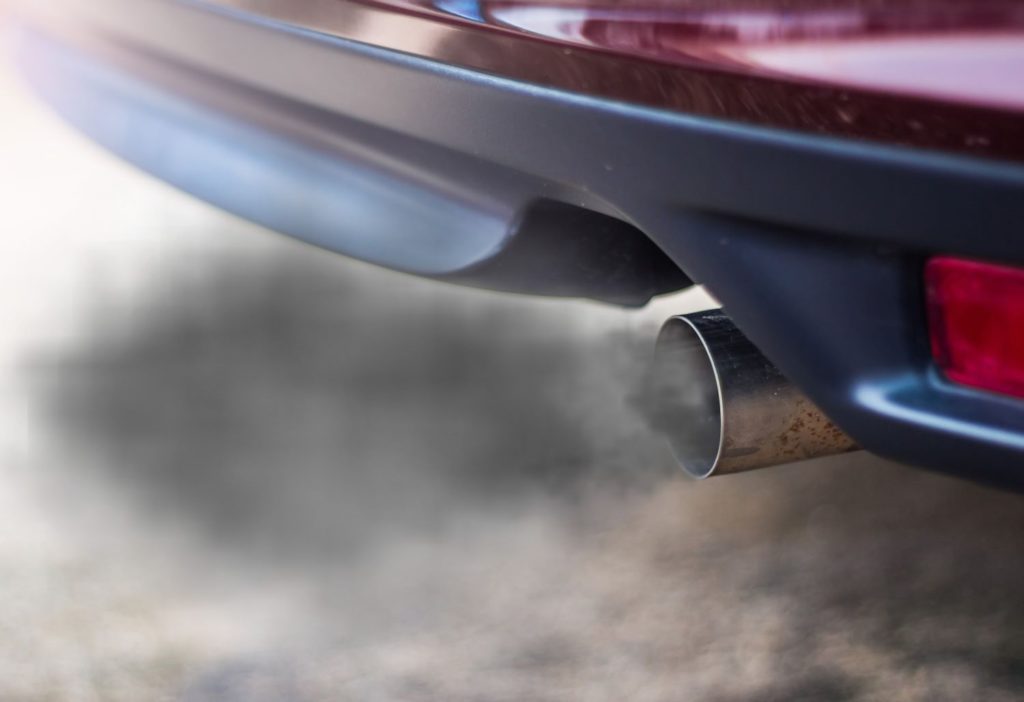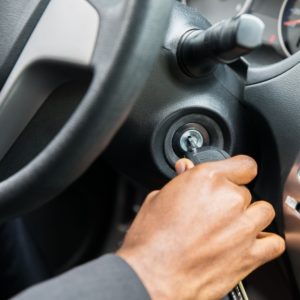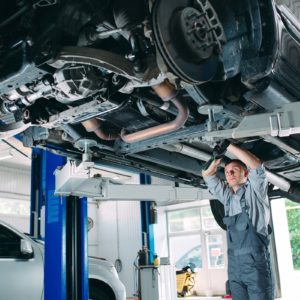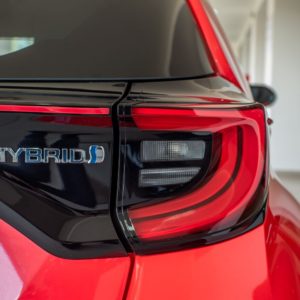Wondering if your vehicle has any problems you’re not seeing? Use a scan tool to find any hidden issues that might create problems in the future. If the scan tool shows that the P207F code has been triggered, this article will inform you about its definition and common causes and symptoms.
What Does the P207F Code Mean?
The P207F code is defined as Reductant Quality Performance. The powertrain control module triggers the P207F code when it detects that the reductant catalyst system isn’t performing its job properly. Your vehicle’s nitrogen oxide (NOx) sensors might have detected higher levels of NOx in the exhaust. Many modern diesel vehicles have a Selective Catalytic Reduction (SCR) system that uses a Diesel Exhaust Fluid (DEF) to reduce NOx emissions. This process turns NOx into nitrogen, carbon dioxide, and water, which are significantly less harmful.
Note: The definition of the P207F code can be different depending on the vehicle manufacturer. Consult the appropriate repair manual or repair database for the exact code definition.

What are the Common Causes of the P207F Code?
The P207F code is typically triggered when your vehicle has the following problems:
- Contaminated DEF
- DEF injector failure
- SCR failure

What are the Common Symptoms of the P207F Code?
The problems that set the P207F code can prevent the Diesel Particulate Filter (DPF) from regenerating. As a result, the soot trapped inside the filter might refuse to burn away. A clogged DPF can cause several engine-related symptoms such as:
- Poor engine performance
- Increased fuel consumption
- High engine temperatures
- More black smoke from the exhaust
- Illuminated check engine light
How to Diagnose the P207F Code
If you find that the P207F code has been triggered, then you need to identify the cause of the diagnostic trouble code (DTC) before you make any repairs. You shouldn’t automatically assume that your vehicle has the same problems as the common causes of the P207F code.
Diagnosing DTCs typically involves doing visual inspections and perhaps even tests on some components. This task can require technical knowledge and specialized tools. If you think this is daunting, then you should leave it to a professional mechanic.
Want to learn how to diagnose the problem yourself? Watch the video below:
How to Fix the P207F Code
Like most DTCs, there’s no magical one-size-fits-all solution to a P207F code. There are different repairs that you can try, but what works for another vehicle might not work for yours. However, addressing the P207F code’s common causes is still a great place to start, so consider trying out some of these repairs:
Replace Degraded DEF
Replacing your DEF is a relatively simple process you can do on your own. To do so, you’ll need a fresh bottle of DEF, a small funnel, and a pair of latex gloves. Locate your DEF tank filler, which is usually under the hood or next to your gas tank filler, and follow these steps:
- Open your DEF tank filler.
- Place the funnel on the filler’s opening to avoid spilling DEF.
- Carefully pour the fresh DEF into the tank filler.
- Remove the funnel, and seal the tank tightly with the filler cap.
While refilling your tank filler, be careful not to spill any DEF. It might not be flammable or toxic, but it’s corrosive and can damage surfaces it comes into contact with. Exposure to DEF can also irritate your lungs, so you might want to wear a face mask or work in a well-ventilated area when you replace your DEF.
Replace Bad Wiring and Connectors
In some cases, fixing any bad connectors or wiring leading to your reductant pump circuit can get rid of a P207F code. Of course, you’ll have to check if faulty connectors or wiring is actually the issue by conducting a visual inspection first.
Look for any damaged or corroded wires, and replace them if necessary. After replacing the damaged wires, you’ll have to retest the entire system to check if the P207F code is gone, so be sure to have your scan tool with you.
Replace NOx Sensor and Control Module
If a faulty NOx sensor and control module is causing your vehicle to throw a P207F code, then you’ll have to replace them with new ones. To do so, you’ll have to turn off your engine disable switch first, and then follow these steps:
- Open your left rear SCR access door.
- Remove the tie straps connecting the harness connector to the sensor lead.
- Carefully disconnect the harness from the NOx control module.
- Remove the screws holding the control module in place.
- Remove the NOx sensor from the exhaust outlet pipe.
Now that you’ve removed your faulty NOx sensor and control module, it’s time to install the new parts. Consider following these steps:
- Install the new NOx sensor in the exhaust outlet pipe.
- Reinstall the control module’s mounting fasteners.
- Connect the harness to the control module.
- Reattach the tie straps connecting the harness and sensor lead.
- Turn the engine disable switch on.
- Use your scan tool to check if the P207F code has disappeared.
- Close the left rear SCR access door and the rear engine service doors.
Keep in mind that these are only general steps and that the exact procedure can vary depending on your vehicle’s make and model. If you aren’t sure how to replace your NOx control module, it’s best to consult your owner’s manual or ask a mechanic for help.
Any information provided on this Website is for informational purposes only and is not intended to replace consultation with a professional mechanic. The accuracy and timeliness of the information may change from the time of publication.


















